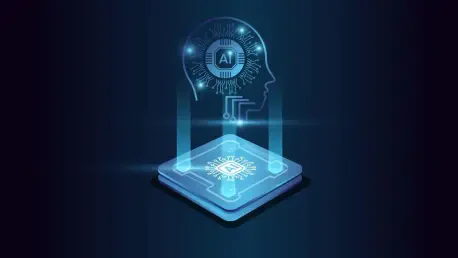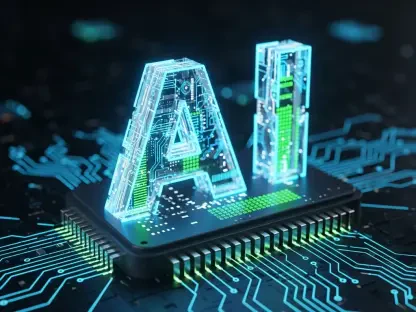The Emergence of AI Coding Tools in Education
The landscape of computer science education is undergoing a profound transformation as generative AI coding tools become integral to learning environments, reshaping how students approach programming challenges and offering new ways to enhance their skills. These tools, capable of suggesting code snippets and solving complex problems, have gained significant traction in academic settings. With nearly half of surveyed students reporting increased confidence after brief interactions, the adoption of such technology signals a shift in traditional teaching paradigms. This surge in usage reflects a broader trend where AI is no longer just a novelty but a fundamental component of modern education.
Prominent tools like GitHub Copilot and ChatGPT stand at the forefront of this revolution, offering students unprecedented access to real-time coding assistance. Their integration into university curricula is driven by major technological advancements in natural language processing and machine learning, enabling more intuitive and context-aware support. Key market players, including tech giants and edtech startups, are continuously innovating to refine these tools, tailoring them to meet the specific needs of learners and educators while navigating the competitive landscape of educational technology.
Beyond technology, educational policies are evolving to address the ethical and practical implications of AI adoption. Institutions are crafting guidelines to ensure responsible use, focusing on data privacy and academic integrity. These frameworks aim to balance the benefits of AI with the need to maintain rigorous academic standards, ensuring that students develop core skills alongside technological proficiency. As adoption continues to grow, the intersection of policy, technology, and pedagogy remains a critical area of focus for shaping the future of computer science education.
Trust Dynamics in AI Coding Assistance
Initial Enthusiasm and Confidence Surge
When first introduced to AI coding tools, students often exhibit a remarkable boost in confidence, captivated by the potential to streamline their workflow. Data from a recent study reveals that nearly half of participants felt more assured in their abilities after just an 80-minute session with tools like GitHub Copilot. This initial enthusiasm stems from the immediate productivity gains and the simplicity of generating code with minimal effort, presenting an attractive shortcut to tackling complex assignments.
The allure of ease plays a significant role in driving this early trust, as students perceive AI as a reliable partner in overcoming coding hurdles. Emerging technologies further fuel this sentiment by promising smarter, faster solutions that align with the fast-paced demands of academic life. Beyond mere convenience, the opportunity to enhance learning experiences through instant feedback and tailored suggestions creates a sense of empowerment among users, fostering a positive outlook on AI integration.
This surge in confidence also reflects broader behavioral shifts among students, who increasingly prioritize efficiency in their academic pursuits. The promise of spending less time on repetitive tasks and more on conceptual understanding is a compelling driver. However, this initial wave of optimism sets the stage for a deeper exploration of whether such trust can withstand prolonged engagement with AI tools in real-world scenarios.
Evolving Perceptions Over Time
As students engage with AI coding tools over extended periods, their perceptions undergo a notable transformation, often leading to a more tempered view of the technology’s role. Findings from a 10-day project involving real-world coding tasks indicate that only 39% of participants maintained confidence in AI as a supplementary tool after sustained interaction. Conducted at a leading university, this study highlights how familiarity with AI exposes its limitations, prompting a reassessment of its value in educational contexts.
The data suggests that while AI can accelerate certain aspects of coding, it often falls short in nuanced problem-solving, requiring students to rely on their own expertise. This shift in trust is accompanied by a growing recognition of the importance of manual skills, as students encounter scenarios where AI-generated outputs need significant refinement. Looking ahead, projections from the study anticipate a more balanced perspective emerging over the next few years, with trust stabilizing as users become more discerning.
Forward-looking insights point to a future where students view AI not as a crutch but as a complementary asset in their learning journey. This evolving mindset is expected to influence how educational programs structure AI integration, emphasizing critical evaluation over blind reliance. As trust dynamics continue to mature, the focus will likely shift toward cultivating a synergy between human ingenuity and machine assistance in academic settings.
Challenges of Over-Reliance on AI Tools
The integration of AI coding tools in education is not without significant hurdles, particularly the risk of over-reliance among students. One pressing issue lies in the technological limitations of these tools, which can produce incomplete or inaccurate code, leading to potential errors in critical projects. Such shortcomings underscore the danger of depending too heavily on AI without the ability to independently verify or debug outputs, posing a threat to skill development.
Market-driven concerns further complicate the landscape, as varying skill levels among users create disparities in how effectively AI tools are utilized. Students with weaker foundational knowledge may lean excessively on AI, stunting their growth, while more advanced learners might use it merely as a productivity enhancer. This uneven application highlights the need for tailored approaches in educational settings to address diverse learner needs and prevent dependency from taking root.
To mitigate these risks, fostering critical thinking and manual coding skills remains essential. Encouraging students to question AI suggestions and develop problem-solving abilities independently can counteract the pitfalls of over-reliance. Educational strategies that prioritize a balance between leveraging AI for efficiency and maintaining hands-on practice are vital to ensuring a comprehensive learning experience that prepares students for professional challenges.
Pedagogical Implications and Educational Guidelines
The rapid rise of AI in computer science education demands a reevaluation of teaching methodologies to align with technological advancements. Traditional curricula, often centered on manual coding and theoretical principles, must now incorporate training on AI tool usage without compromising foundational learning. This dual focus aims to equip students with the ability to harness AI effectively while retaining the depth of understanding necessary for independent innovation.
Compliance with educational standards plays a pivotal role in this transition, as institutions strive to integrate AI responsibly. Guidelines are being developed to ensure that AI use does not undermine academic integrity or create unfair advantages, emphasizing transparency in how tools are applied during assessments. Training in critical evaluation of AI outputs is equally crucial, empowering students to discern when machine-generated code requires human intervention to meet industry expectations.
The broader impact on teaching practices cannot be overlooked, as educators adapt to a landscape where AI is a classroom staple. Professional development programs are increasingly necessary to familiarize instructors with these tools, enabling them to guide students effectively. By striking a balance between technological adoption and skill-building, educational frameworks can prepare learners for a future where AI is ubiquitous, ensuring they meet the rigorous demands of the tech industry.
Future Directions for AI in Computer Science Education
Looking ahead, the trajectory of AI coding tools in education promises both innovation and disruption as advancements continue to unfold. Emerging capabilities, such as more sophisticated contextual understanding and error detection, are poised to enhance the functionality of these tools, potentially deepening their integration into learning environments. Such developments could redefine how programming is taught, pushing the boundaries of what students can achieve with AI support.
Shifting student preferences toward hybrid learning models, which combine traditional instruction with digital assistance, are likely to shape adoption trends in the coming years. This inclination reflects a desire for flexibility and personalization in education, where AI serves as a customizable tutor alongside conventional teaching. Global industry trends, including the growing demand for AI-literate professionals, further underscore the importance of preparing students for a tech-driven workforce through adaptive academic programs.
Several factors will influence future growth, including technological breakthroughs, evolving educational policies, and the pace of market innovation. As AI tools become more refined, their role in education may expand, necessitating continuous updates to curricula and teaching strategies. Monitoring these dynamics will be critical to ensuring that academic institutions remain aligned with industry needs, fostering an environment where students can thrive amidst rapid technological change.
Conclusion
Reflecting on the journey of AI coding tools in education, it became evident that students’ trust followed a distinct arc, peaking with initial excitement and settling into a more measured perspective after extended use. The exploration of these dynamics revealed critical insights into the interplay between technology and learning, highlighting both the transformative potential and inherent limitations of AI assistance. Educators and institutions grappled with balancing innovation with the preservation of essential skills, navigating a path that respected both progress and tradition.
As a next step, stakeholders were encouraged to prioritize the development of hybrid curricula that integrated AI training with robust foundational programming education. Investing in instructor training emerged as a vital consideration, ensuring that faculty could adeptly guide students in leveraging AI responsibly. Looking forward, the focus shifted to fostering partnerships between educational bodies and tech industries to anticipate future demands, ensuring that the next generation of coders was equipped not just to use AI, but to innovate beyond its capabilities.








